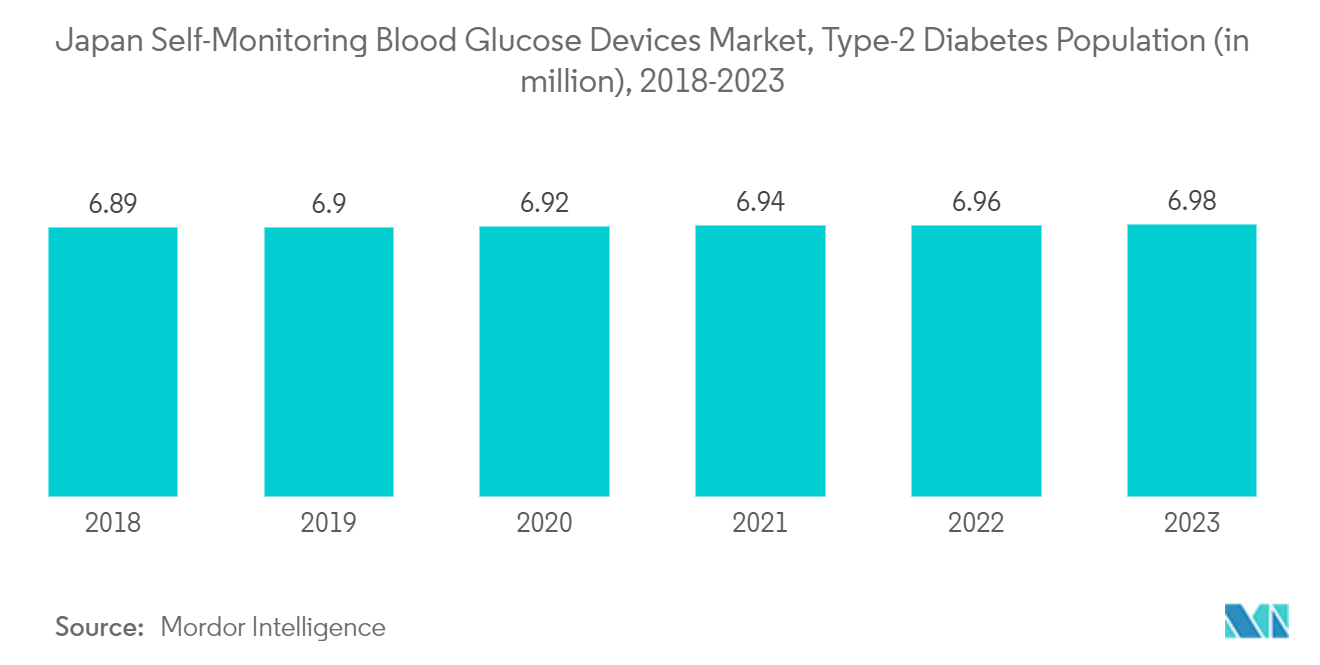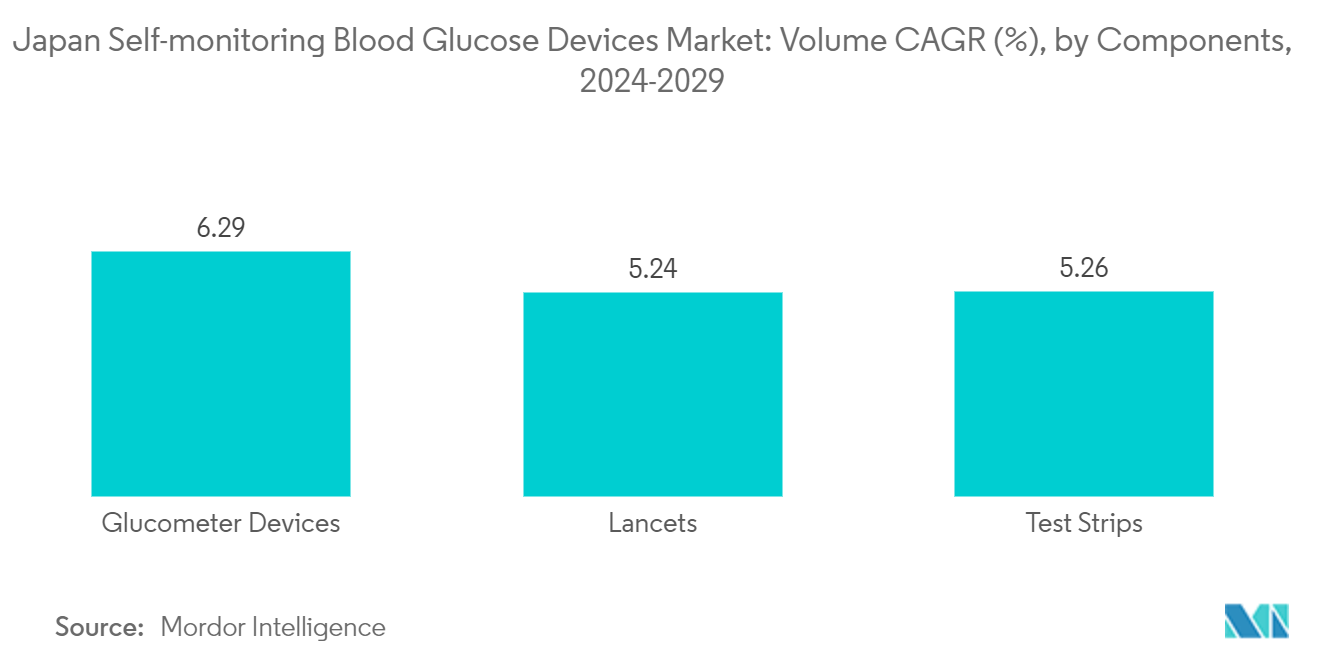Market Trends of Japan Self-Monitoring Blood Glucose Devices Industry
Rising Diabetes Prevalence in Japan
The diabetes population in Japan is expected to grow by about 0.30% over the forecast period.
Diabetes has emerged as a global epidemic. Japan had around 11 million people with diabetes, according to IDF data. Japan has one of the largest elderly populations in the world, which is more susceptible to the onset of type-2 diabetes. As Japan's population continues to age, the prevalence of diabetes increases as well. The monitoring and management of blood glucose levels are on the rise to avoid negative consequences such as cardiovascular diseases, kidney disorders, and many other conditions.
Self-monitoring is a commitment that many diabetic patients make to manage their condition. The blood glucose levels help the patients and doctors modify their diet, lifestyle, insulin therapy, and medications to help their blood sugar return to normal. With newer innovations in medical technology, glucometers these days have highly sensitive strips and sensors that can detect every component of blood accurately, close to lab results.
Diabetes mellitus has been of wide concern with its high prevalence, resulting in increased financial burdens for clinical systems, individuals, and governments. The Japanese healthcare system has a few disease management programs conducted by the Japan Association for Diabetes Education and Care. Japan is one of the regional leaders in the Asia-Pacific in terms of diabetic public health policies. The country promotes public awareness and embraces preventive policies that focus on lifestyle and dietary adjustments, which can lessen the likelihood of adult-onset diabetes.
Therefore, the studied market is anticipated to witness growth over the analysis period due to rising prevalence and the aforementioned factors.

The Test Strips Segment holds the highest market share in the current year
The test strip segment held the highest market share of about 70% in the current year.
Blood glucose test strips are small, disposable strips and are a key component of blood glucose testing. When blood is placed on the test strip, it reacts with a chemical called glucose oxidase, producing gluconic acid from the glucose in the blood. At the other end of the test strip, the meter transfers a current to the strip. The test strip has electric terminals, which allow the meter to measure the current between the terminals. The current between the terminals changes depending on the level of gluconic acid that has been produced. The blood glucose meter then uses an algorithm to work out the blood glucose level based on the difference in current.
The growth in market share of test strips is expected to be higher than that of glucose meters because of the difference in use-case frequency. The glucometer is a one-time purchase; test strips, on the other hand, are a continuous investment as a test strip needs to be disposed of after one use, causing a recurrent cost impact. While an average glucose meter lasts anywhere between six months and three years, presenting a one-time cost during the same time frame,
Diabetes has been identified as a healthcare priority by the Ministry of Health, Labour, and Welfare. The high prevalence of type-2 diabetes is associated with a significant economic burden. The costs of diabetes are increased in patients with comorbidities such as hypertension and hyperlipidemia and in patients who develop complications. Costs increase with an increasing number of complications. Well-organized medical insurance systems cover all medical fees for diabetes mellitus, and diabetics can visit doctors freely in Japan.
Such advantages will help increase the adoption of these products in the Japanese market.


